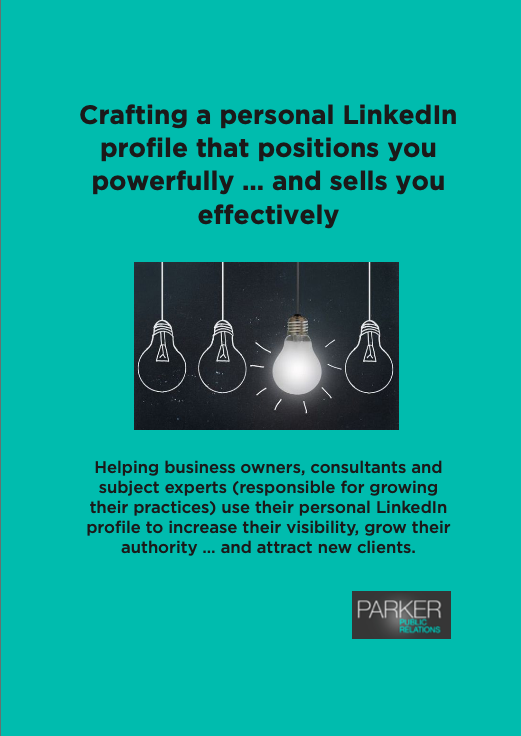Becoming an acknowledged thought leader will remain a key leadership aspirations into 2018 and beyond.
However, intrinsic to achieving this goal is the creation of content that not only positions you as an expert but that is useful, informative and … memorable.
Here are my top SIX thought leadership content rules that you should apply regardless of whether you’re blogging, engaged in public speaking, podcasting, creating a business book or chasing publicity.
Ideally your content should:
Rule 1 – Take your audience along with you on a journey
To do this effectively you need to have a content strategy and a theme that you stick with religiously.
When it comes to strategy, I’m a great advocate of the narrative arc. This gives you an overarching story-line that binds all your pieces of content into one long, compelling, multi-year story which ideally focusses on just the one theme.
To better explain this approach, I will use myself as an example. My content theme is ‘teaching business people how to become thought leaders’. I kicked off the process by explaining what thought leadership is and isn’t and why people should give two hoots about being a thought leader. I am now in the process of telling my audience what they need to do in order to achieve this status. My end point will doubtless be about the people I have successfully trained and who are now kicking butt as thought leaders.
Using this narrative arc approach is anything but boring and will hopefully help keep your audiences hooked and right there with as you navigate the twists and turns of your thought leadership journey.
Rule 2 – Sell ideas and deep thinking … but never, never products or services
Content marketing is about creating and distributing relevant content to attract, acquire, and engage a clearly defined and well understood target audience. Thought leadership is another beast entirely.
It is about becoming the go-to for your expertise and the person people turn to for your wisdom, knowledge and ideas. In some instances it is about changing the world for the better – be it via the introduction of new practices, new ways of doing business, new thinking or by cleaning up your professions or industries which may be in need of an overhaul.
So what does this mean for your content?
It means that you need to not only sell your big ideas and new thinking but excite and harness the support of your fans and followers to help advance your thinking beyond your company or community and spread it across an entire industry, niche, or better still, ecosystem.
Rule 3 – Respond to what is keeping your audiences awake at night
As a thought leader you should know what your audiences are talking about, what their pain points are and what mistakes they are they repeatedly making then look at where you can fill in the knowledge gaps.
You should also be looking at answering those many unanswered questions surrounding stories and news in your field of work and research. Most importantly, you should make careful note of why people come to you for information … then capitalize on this.
Bottom line, you should offer a real solution to a real problem.
Rule 4 – Stay abreast of the latest issues and trends
As a would-be thought leader you should familiarise yourself with the emerging issues, trends, threats and disruption facing your industry and think about how best you can help your audience prepare for these eventualities.
Where possible you should:
- Provide information that goes beyond current thinking
- Lead the conversation and challenge your target audience
- Offer something new and different.
- Be controversial, buck the trend, or even throw stones at giants
- Be opinionated and unafraid to express opinions on issues you care about.
Rule 5 –Back up your ideas with hard data
One of the best ways of building great thought leadership content is to produce deep research on your niche topic. This will give you a depth of knowledge no one else has and can become the basis for future blogs, media releases, articles, social media posts, white papers, public speaking presentation, podcasts or a business book.
This research does not need to involve hundreds of different projects each year but can simply be one truly worthwhile project that provides invaluable insights.
Including data and research in your articles will ensure that what you say is evidence-based and will elevate your standing as thought leader, vastly increasing the likelihood of the media and bloggers seeking you out.
If nothing else, having some actual data makes your ideas more persuasive than mere opinions.
Rule 6 – Be authentic and embrace your human side
Next to knowledge, being authentic is critical to being a great thought leader but sadly something most people shy away from.
Being authentic is being yourself which resonates with your audience and allows them to identify with you on a more personal level.
Let’s face it … people want to know what you stand for, what is important to you and how key events in your personal life have driven you to do what you are doing right now.
They want to hear about the difficult stuff and how this has helped shape you and make you who you are!
So in a nutshell, great thought leadership content:
- Keeps your readers and listeners with you for the duration of your journey
- Sell ideas and deep thinking … but never, never products or services
- Responds to what is keeping your audiences awake at night
- Stays abreast of the latest issues and trends
- Back up your ideas with hard data
- Shows your human side
If you are interested in thought leadership coaching or a strategy workshop we’d love to talk with you. To get in touch, contact Wendy at wendy@parkerpublicrelations.com.au


